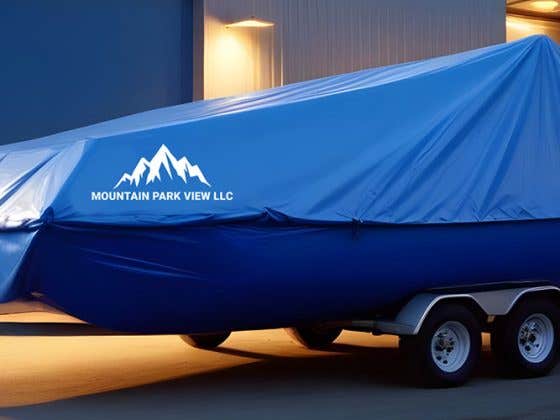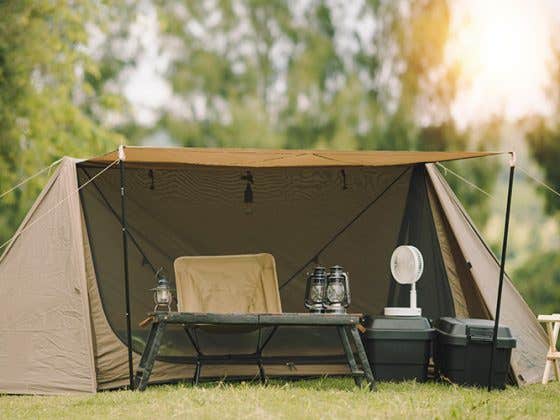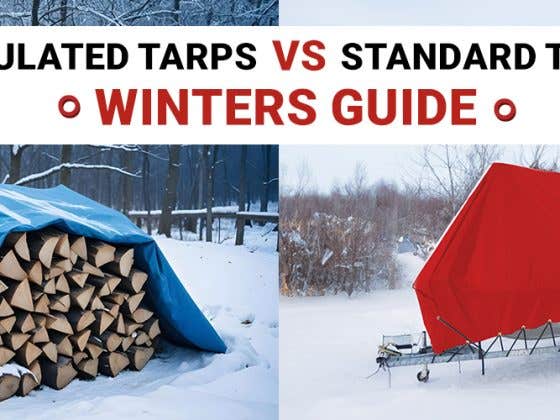Securing tarps in windy conditions can be a challenging task, but it’s essential to ensure they remain effective and protective. Tarps are indispensable tools for various outdoor activities and projects, such as camping, construction, and equipment coverage. Whether you’re battling the elements to protect your campsite, safeguarding construction materials, or covering outdoor equipment, the right techniques can make a significant difference. In this comprehensive guide, we will delve into how to secure a tarp, highlight the best methods to keep it in place, and discuss different types of tarps ideal for windy conditions. By following these practical tips, you can confidently secure your tarp, ensuring it withstands even the harshest winds.
The Importance of Proper Tarp Securing
Before diving into the specifics of how to secure tarp in wind, it’s crucial to understand the reasons for ensuring a tarp is tightly secured. A loose tarp can lead to damaged property, safety hazards, and ineffective protection. Properly securing a tarp will:
- Prevent Damage: High winds can cause a tarp to flap violently, potentially tearing it or damaging the items underneath.
- Ensure Safety: A poorly secured tarp can become airborne, posing a risk to people and property nearby.
- Maintain Effectiveness: A secure tarp provides consistent protection against wind, rain, and other elements.
10 Tips to Secure a Tarp
1. Use Rope or Bungee Cords
One of the most effective ways to secure a tarp is by using rope or bungee cords. Here’s how to secure a tarp using this method:
- Select the Right Rope or Bungee Cords: For a heavy duty tarpaulin, use thick, durable rope or heavy-duty bungee cords.
- Identify Secure Tie-Down Points: Find stable points around the perimeter, such as trees, stakes, or the structure you’re covering.
- Secure the Corners First: Start by tightly securing the corners to stabilize the tarp.
- Cross Tie: Create a crisscross pattern with the rope or bungee cords across the tarp’s surface to distribute tension evenly and minimize flapping.
2. Use Tarp Clips and Stakes
For added security in extremely windy conditions, use tarp clips and stakes:
- Attach Tarp Clips: Place clips along the edges and corners of the tarp for additional anchor points.
- Secure with Stakes: Drive stakes into the ground through the clips to anchor the tarp securely.
3. Build a Frame
For the best tarp setup for wind, consider building a frame:
- Construct a Frame: Use poles or PVC pipes to build a frame structure over which the tarp can be draped.
- Attach the Tarp to the Frame: Secure the tarp to the frame using rope, bungee cords, or zip ties. This method provides a sturdy structure that can better withstand high winds.
4. Weigh Down the Edges
Another effective method for how to keep tarp from blowing away is to weigh down the edges:
- Use Heavy Objects: Place sandbags, rocks, or bricks along the edges of the tarp.
- Ensure Even Weight Distribution: Make sure all sides are weighed down evenly to prevent wind from getting underneath and lifting the tarp.
5. Prevent Flapping
Flapping tarps can cause noise, distraction, and potential damage. Here are some tips for how to keep tarp from flapping:
- Regularly Tighten Securing Points: Check and tighten the securing points frequently, especially after strong winds.
- Increase Tie-Down Points: Add more tie-down points to reduce the amount of tarp exposed to the wind.
- Use Elastic Straps: Elastic straps can absorb some of the wind’s force, reducing flapping and strain on the tarp.
6. Choose the Right Tarp for Windy Conditions
Selecting the right tarp is as important as securing it properly. Here are some considerations:
- Durability: Heavy duty tarps, wind resistant tarps, and windproof tarps are designed to handle harsh conditions better.
- Material: Vinyl tarps are excellent for waterproofing and durability, while mesh tarps allow air to pass through, reducing wind resistance. Canvas tarps offer breathability and strength, and poly tarps provide a good balance of cost and functionality.
- Size: Ensure the tarp is large enough to cover your items but not so large that it becomes difficult to manage in the wind.
7. Use Grommets and Eyelets
Reinforced grommets and eyelets can provide additional securing points:
- Reinforced Grommets: Make sure the tarp has reinforced grommets to prevent tearing.
- Use Eyelets: Attach eyelets to provide extra anchor points for securing ropes or bungee cords.
8. Create a Windbreak
Creating a windbreak can significantly reduce the wind’s impact on your tarp:
- Natural Barriers: Use natural barriers like trees or bushes to shield the tarp from direct wind.
- Artificial Windbreaks: Set up artificial barriers such as fences or walls to block wind.
9. Double Layering
Double layering your tarp can provide extra security and protection:
- Two Tarps: Use two tarps layered on top of each other to increase durability and resistance.
- Secure Both Layers: Ensure both layers are tightly secured to prevent wind from getting between them.
10. Regular Maintenance
Proper maintenance can extend the life of your tarp and improve its performance in windy conditions:
- Inspect Regularly: Check for signs of wear and tear, such as holes or frayed edges.
- Repair Promptly: Patch any holes or tears immediately using repair kits designed for your tarp material.
- Store Properly: When not in use, store your tarp in a cool, dry place to prevent mildew and deterioration.
Types of Tarps Suitable for Windy Conditions

Choosing the right tarp is the first step in ensuring it can withstand windy conditions. Here are some types of tarps that are particularly effective:
- Heavy Duty Tarps: These tarps are thicker and more robust, designed to withstand harsh weather conditions.
- Weather Tarps: Specifically made to endure various weather conditions, including high winds.
- Wind Tarps: Reinforced to handle strong winds without tearing or becoming loose.
- Waterproof Tarp: Waterproof tarp essential for keeping moisture out while also being resistant to wind.
- Vinyl Tarp: Vinyl tarp known for its strength and waterproof qualities, making them excellent for long-term outdoor use.
- Mesh Tarp: Mesh tarp allows airflow while providing coverage, reducing wind resistance.
- Canvas Tarp: Canvas tarp made from heavy-duty cotton, these tarps are durable and breathable, though not as waterproof.
- Poly Tarp: Poly tarp lightweight and cost-effective but may not be as durable as other types.
Practical Applications of Tarps
| Application | Description |
| Camping | When camping, knowing how to secure a tarp is essential for creating a reliable shelter. Use strong ropes and secure tie-down points to keep your shelter intact during windy nights. For added security, consider using wind resistant tarps and constructing a frame. |
| Construction Sites | On construction sites, heavy duty tarps are often used to cover materials or provide temporary protection. Use a combination of tarp clips, stakes, and weighted objects to secure the tarp and prevent flapping. |
| Outdoor Events | For outdoor events, weather tarps and vinyl tarps are ideal for protecting equipment and guests from the elements. Ensure that tarps are securely fastened to prevent accidents caused by wind. |
| Agriculture | In agriculture, tarps are used to cover crops, equipment, and hay. Mesh tarps can provide shade and airflow, while poly tarps offer protection from rain and wind. Use strong securing methods to keep these tarps in place. |
Conclusion
Securing a tarp in windy conditions requires the right materials and methods. By understanding how to secure a tarp, using the appropriate heavy duty tarpaulin or wind proof tarp, and employing effective tying techniques, you can ensure that your tarp remains stable and protects your belongings. Whether you are camping, working on a construction site, or hosting an outdoor event, following these tips will help you keep your tarp secure and functional. Regular maintenance and proper storage are key to prolonging the life of your tarps and ensuring they perform well when needed.

















Recent Comments